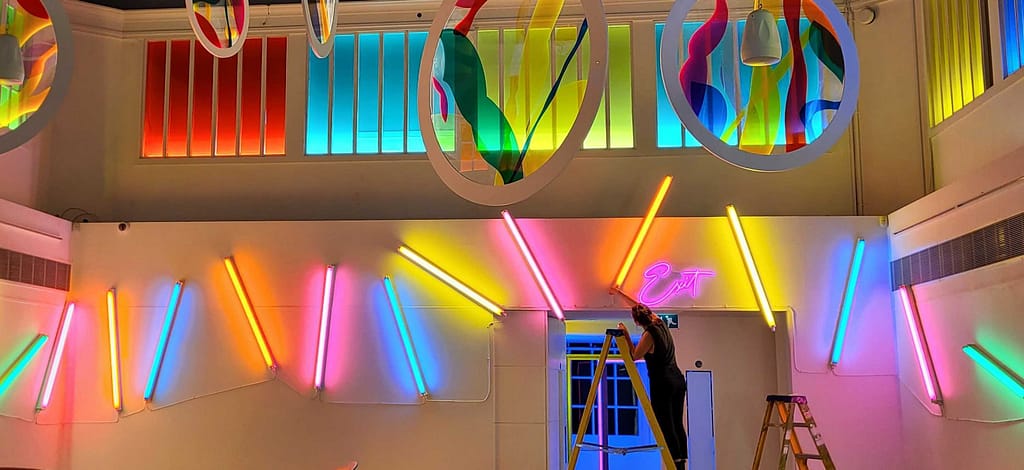
Whilst music festivals have been getting attention for their serious gender imbalances in performer lineups, behind the scenes, the teams who help deliver festivals such as audio and lighting crews have an even more serious gender problem.
For example the BBC found that only 13% of headliners at the UK’s top music festivals in 2022 were women. And beating that statistic by an unhealthy margin - just 5% of audio engineers are women.
The visible & invisible barriers to women and non-binary people in technical lighting and audio crews are manifold. From blatant sexism and harassment (within the music sector over 60% of workers have experienced sexual harassment), to assumptions of male competency, to gender pay gaps, and so on.
Bailes+Light director Benji Bailes has been working to improve crew diversity across all their projects. For Greenpeace at Glastonbury Festival they just recently hit an important milestone - only 30% of the 21 people working on the lighting team were men. Over 50% were women, with the remainder being non-binary.
The 2022 crew at Glastonbury reflects the outcome of successful networking across other Bailes+Light projects. “We still have a lot of work to do, but have a number of highly experienced industry professional women to call on for our projects now”, says Bailes. “I think it reflects a lot of the work being done in various colleges up and down the country.”
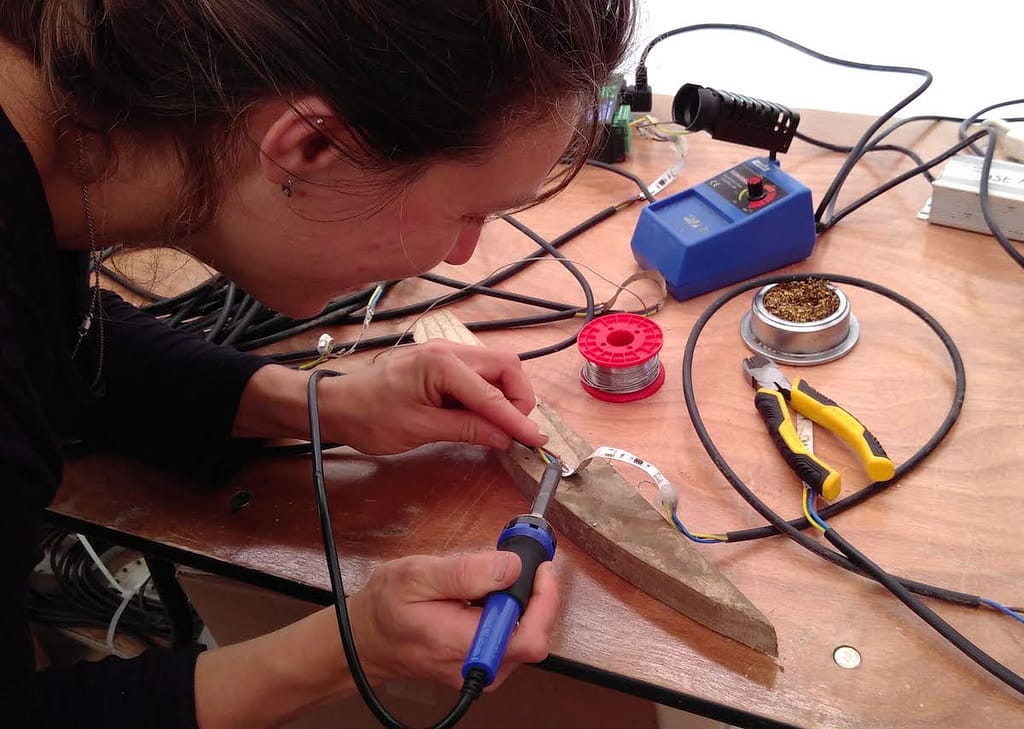
Building a team based on gender equality is not only about equity, it also produces a better experience for everyone: “As a non-binary person I have often felt more comfortable working in teams made of varied and flourishing individuals, away from the dominant masculine culture of traditionally-shaped crews”, says Bailes. “A more diverse team - be it across gender, race or socio-economic status - brings a more true-to-life work culture in an environment that encourages participation of many voices.
only 30% of the 21 people working on the lighting team were men. Over 50% were women, with the remainder being non-binary
While at Bailes+Light we can be immensely proud of our record on gender, we have a long way to go to meet a more true-to-life representation across our entire workforce.
We thought we’d share a few tips to help other companies on their way.
It might sound obvious, but you need someone who can do the groundwork and hold the process. Our D&I lead spends a significant amount of her job researching and reaching out to people and organisations. She works regularly with directors and makes recommendations on how to approach core business activity in new ways. When considering bigger projects, it's safer for this to be a full-time role in itself.
With women still representing such a small percentage of the technical workforce, recruiting might seem an impossible hurdle. “If it seems like it’s hard to find people, then keep looking! Don’t be afraid to try working with new people you don’t know very well. Consider what biases you might hold yourself about people and abilities then work to undo them. It’s super rewarding and you very quickly realise that you are able to create spectacular experiences and features with diverse teams”, says Bailes.
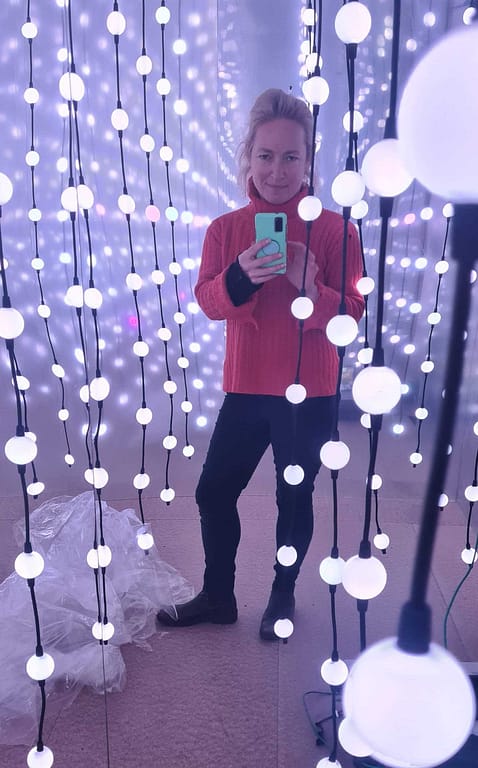
Examining and rewriting your job adverts and crew callouts can be an important place to start. There are plenty of resources available to help with gendered language. A simple Google search of ‘gendered language checker’ will set you on the right course. Another barrier might be the way the job description is written. When it comes to a full job recruitment process, be careful what you put down as an ‘essential’ requirement and instead angle a JD in a way that people from all backgrounds can genuinely engage with. Some people may have the skills you need but not necessarily feel confident in applying - make a point of widening the potential pool.
Where you recruit is also important. While it may be quick and easy to post a job on your own social media channels, this only leads to employing people within your own networks. Bailes+Light Diversity and Inclusion (D&I) lead Eva Arnold has been working to improve hiring practices across the business. “Having the right ethics isn’t enough”, says Arnold. “You need to put time - and therefore company money - into looking for job boards that target diverse groups and organisations who specialise in promoting jobs to more diverse audiences. Of course the good news is that when you’ve done this once, then you have the tracks to go back over and the relationships are already established next time you come to recruit!”
Setting targets and being persistent in pursuing them has been integral to achieving gender equality in the Glastonbury crew. “I will always prioritise someone who is not male over someone who is - assuming they have comparable skills. Call that positive discrimination if you will”, says Bailes. “I won’t stop looking for crew members if I am missing my target. Sadly this has meant that I have had to drop experienced technicians from the project to make space, which obviously has real-world consequences, but these hard decisions in the long term will create a more representative working environment for everyone if handled sensitively”.
Festivals have a long tradition of relying on volunteers. This creates economic barriers to genuine diversity and inclusion and skews teams toward white, male and middle class workers. “Inclusivity comes down to money.” says Arnold, “If you want all kinds of people to work for you, then you need to pay them competitive rates, rather than making unspoken demands that they resource themselves adequately to work for lo-to-no wages. Budgets need to reflect that”.
Implementing a gender pay gap report can also be important to address more hidden imbalances such as recruiting more women into voluntary, or lower ranked (and therefore lower paid) positions.
Within the Greenpeace at Glastonbury project, Bailes has persisted with blanket negotiations with senior management to achieve a more transparent pay model and higher wages for the crew. “This was always previously the most tricky barrier to recruitment”, says Bailes, since festivals traditionally ask people to do a lot of volunteering. To make the project fair and attractive to more people, Bailes+Light removed almost all of the ‘voluntary’ requirements that were imposed on our Glastonbury crew at large.
The Greenpeace build was one of the most positive and lovely experiences I have ever had on a festival/site build. The whole [work] environment was so welcoming and considered and I felt really looked after, supported and encouraged by everyone I worked with
Greenpeace at Glastonbury lighting team member
Creating a positive team culture is key to retaining team members. Much of this can be created by having a representative management team. “Ensure women, transgender and non-binary/gender-queer people are in positions of leadership and ensure that the entire team is well supported”, says Bailes. The lighting team for Greenpeace at Glastonbury include a non-binary department head, and female crew chiefs for both the build and the event.
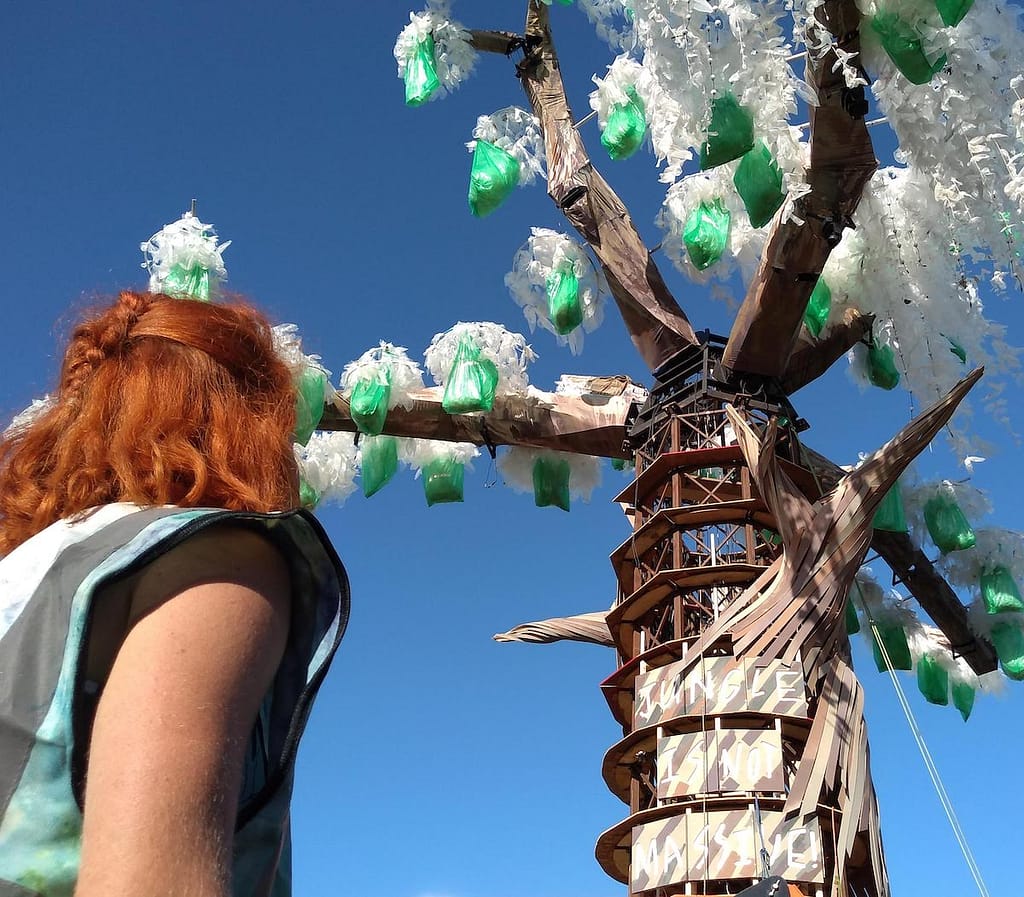
You can only help create an inclusive culture if you give everyone the space to contribute. Create space for everyone on your crew to have a voice, whether through regular check-ins as a team or on a one-to-one basis. Managers and supervisors shouldn’t shy away from calling out misogynistic behaviour and challenging problematic individuals. Let diverse perspectives flourish.
Ensuring people are paid a fair wage for the work they do, wide and intentional recruitment, creating a supportive team culture and employing positive discrimination not only leads to gender equality, it leads to real-world representation. “The starting point is being prepared to pay more and to do the work to address the imbalance”, says Arnold. “This is where the intersectionality of diversity plays a positive role - it becomes about workers rights, which are often eroded in festival and some event settings. It’s those rights that are the paving stones of diversity.”
Five summers ago, I first discovered the wonders of the Wood Wide Web. During our creative design period for Glastonbury Festival a colleague shared ‘From Tree to Shining Tree’, a Radiolab podcast which told the story of mycorrhizal networks: the connections between trees through underground fungal networks.
This was a fascinating story of collaborative biodiversity and symbiosis. It’s a story that would flit through my mind over the course of the next three years.
As an immersive lighting designer, I am often inspired to bring my passion to projects that communicate issues I care deeply about. I’ve used light and sound to encourage collaboration between humans and to campaign for the protection of nature.

As a member of the design team for Greenpeace at Glastonbury I’ve used lighting and creative technologies to involve audiences in important stories about human interaction with nature and was keen to develop these ideas and technologies further. A festival, however, isn’t a great environment to develop new technology. Water and electronics don’t tend to mix well. I needed a little time and space to develop these ideas and technologies further and to focus on them in the level of detail I would have liked.
Fast forward to 2020. With shows and festivals cancelled and the whole world staying at home, I finally had the time to think, play and dream. I wanted to experiment with the tools I have as a lighting designer to take people on a journey - and also give them the freedom to explore and discover an adventure of their own.
I got chatting with artist Poppy Flint, who asked me to help illuminate some tree roots for an exhibition. In this installation, participants would enter into an underground world - roots stretching out above their heads.
Poppy had a strong vision of leading people into a space that would move at a different pace to humans. She wanted to create an experience that would produce a sense of awe at the natural world, and simultaneously a sense of unease with our consumptive human relationship with the environment.
The story of the Wood Wide Web and mycorrhizal networks seemed like a perfect vehicle for the creative uses of technology I had been dreaming up. Could this be an opportunity to put some of my ideas into action? Poppy was game!
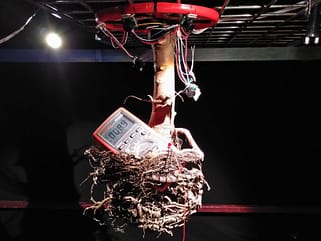
At the time, I had been playing with proximity sensors and contemplating how people interact with light and objects that are illuminated. In nature, plants communicate with each other and react to the proximity of friends or predators. How might we express these communications and reactions with light?
We felt that the mere existence of another life form - this time a human - in the underground domain would cause the roots to respond. I mocked up a root, sensor and light so it would get brighter as people approached it. We could expand on this first step and trigger other events such as sounds and atmospherics based on how close people came to the root.
Trials with individual sensors worked to some extent, but it was difficult to capture people’s movement over a large area. I had been using infrared (IR) motion sensors from above to achieve track movement, but within this low, ‘underground’ installation, there wouldn’t be enough space to capture reliable data. My colleague, Dan, suggested a different approach. We could plot a map and trace a person’s movement using two cameras
A bit of trigonometry and some coding, and voila! We could pinpoint the precise location of people in our installation, and their proximity to the roots and mycelium therein. This gave us the opportunity to develop a story that responded to people’s exploratory movements.
The human could now be the protagonist of the entire piece.
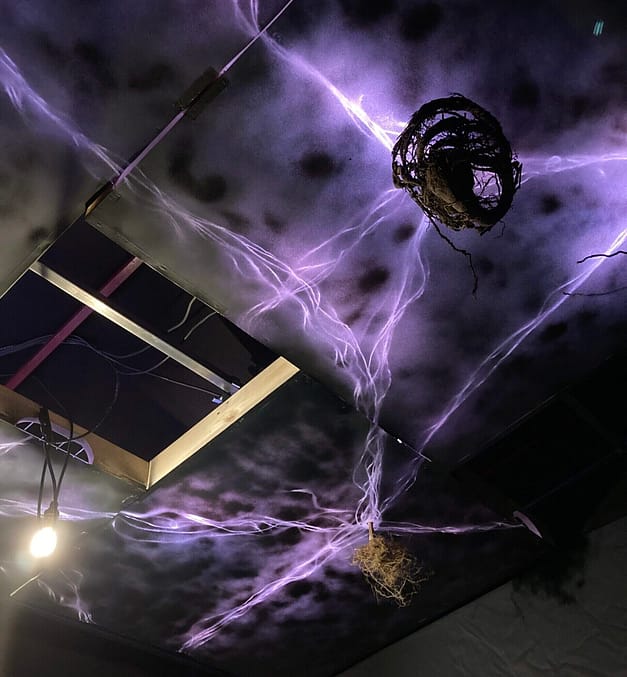
Plants help each other thrive by sharing nutrients. They can warn each other of threats such as insect predators. The mycelium of mycorrhizal fungi (the webs of fungi underground) pass on these messages and compounds, weaving their tendrils within, between and around plants and exchanging nutrients for their own survival and growth.
In our installation, I wanted to represent mycelium and the sharing of nutrients and signals with light. I’ve always struggled with the idea of light for light’s sake. I like light to enhance settings, sculptures or objects, not dominate them.
By representing these signals, light became an integral part of the narrative, rather than a separate element used to enhance the space.
Illuminating the intricate beauty of the roots themselves was also an important part of the installation. By playing with depth and shadow I could make the hairs of the plant glisten and the hairs of the audience stand on end.
Sound would also be an integral part of this underground journey. We worked with friend and sound designer, Lex Kosanke, who was keen to get involved. Lex helped us make sound a fundamental element of the narrative by giving each root a unique sound identity.
The result was ‘Underfoot’ (formerly ‘woven // dissonance’), an interactive audio-visual journey beneath the forest where participants create their own journey to explore their connection to nature.
Here in 2022 it still feels like I am part way through this underground adventure. We still have so much to learn and share, more stories to tell and people to inspire. I don’t yet know how this project will develop, but being able to encourage others to learn about and celebrate biodiversity and symbiosis drives me forward. I hope that we can build on our installation to create a fully interactive audio-visual experience that inspires many more people to respect and treasure our natural world.
You can watch a video made of the installation below.
Escape games can be so much more than a series of brain tickling puzzles. They can be woven into theatrical adventures or museum settings. At their best, they include multidimensional challenges that are part of a complex and gripping adventure.
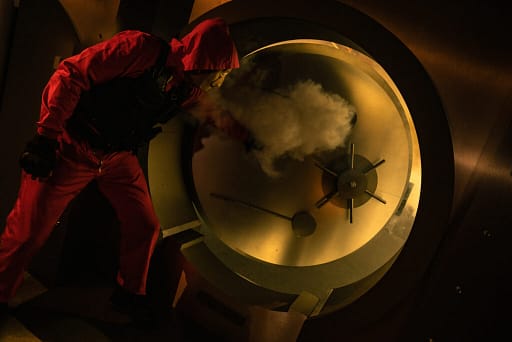
OSCHII helps us integrate escape games into larger theatrical, immersive and museum experiences by creating a network that connects all kinds of things: from lights and sounds to sensors, buttons and game controllers. As participants move through their adventure, their actions, movements and reactions can trigger various components of the games and experience.
In our work designing games for Money Heist: The Experience, we incorporated game elements into a theatrical adventure to create an immersive experience that interfaces with actors and participants in real time as they search for a secret vault of gold in Christie’s auction house. Interactive buttons allow performers and stage managers to queue aspects of the story and enhance the journey.
In the Magna Carta Murders escape room at Westgate Towers, we transformed an existing museum environment into an immersive game-space by turning life-sized statues into game pieces. As players identify statues in the correct order they illuminate, eventually releasing a secret code.
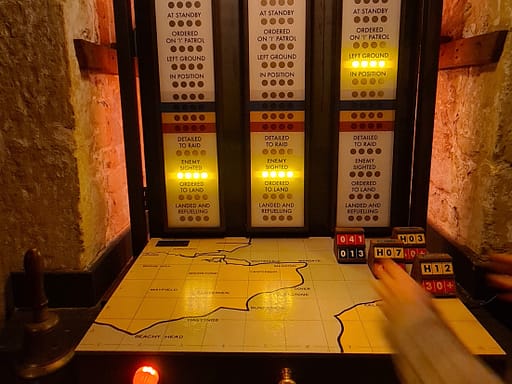
For multidisciplinary games with many components, OSCHII allows us to orchestrate all elements of the game play from a central place. In The Comms Room escape experience, we devised a multifaceted game that included vintage telephones that gave clues players can use to place a prop on the correct place on a map. Once all the pieces are in the correct place, a drawer pops open, giving the key to the next game. OSCHII’s networking capabilities allowed us to control every aspect of the adventure from one place.

OSCHII was born out of frustration and passion. For several years we produced theatrical and immersive interactive games with patched together technologies that were time consuming, complex and didn’t always live up to our creative vision. We decided it was time to turn our hard-won lessons into a new, easy to use and integrated platform. OSCHII would let us create and help others create.
We began building Escape Rooms a few years ago using off the shelf tech, mostly designed for ‘fright’ experiences such as haunted houses.
In many ways they were great--designed to be installed by people with limited experience and knowledge of immersive technology. We love the idea of making this kind of tech accessible to a wide range of creators.
But the more we worked with them, the more time consuming, complicated and expensive using this so-called simple to use, “DIY” technology became. As the games developed, the circuitry got more complicated and, unfortunately, messier. We spent long hours up to our eyebrows in wires and circuit boards hacking everything together. In the end, it just wasn't powerful enough, it didn't quite do what we wanted it to do, and the many hundreds of additional hours spent making circuits that allowed us to do what we wanted to do was, well, getting silly and unaffordable.
It’s fair to say that our escape rooms are fairly technologically complex.
The game technology that we use needs to network with all sorts of other things: atmospheric lighting and audio, billowing smoke, and props such as vintage telephones or swinging lights.
Because we specialise in immersive theatre, we know how to use the whole environment to affect emotion and enhance the journey of the participants. The game technology that we use needs to network with all sorts of other things: atmospheric lighting and audio, billowing smoke, and props such as vintage telephones or swinging lights. As participants move through this adventure, we also need to be able to lock and unlock game elements as one challenge ends and another begins.
We experimented with slightly different technology for our second escape room, bringing it closer to the comfort of our work in immersive theatre and allowing us to inject more drama into the experience.
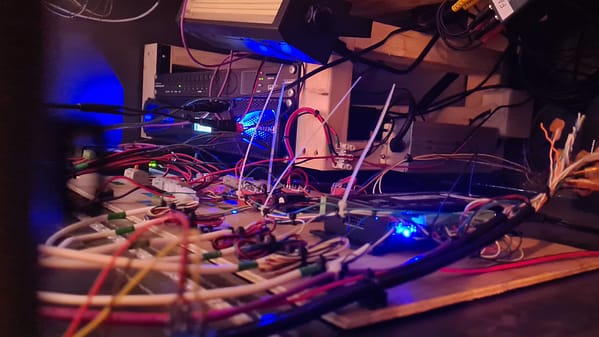
Sound, light, and atmospherics were all carefully scripted and programmed into a complete timeline. In our theatrical productions, we use software that automates many functions within a show to create a slick, fully immersive experience that injects suspense and can leave people with goosebumps.
Yet we still faced the same difficulties integrating this software with the off-the-shelf games hardware. We really needed a technology that was built with all of this in mind.
Outside of work with escape rooms, we encountered similar problems.
We’ve made several large-scale interactive games for festivals, such as a challenge in which around 50 participants joining hands trigger a light show that demonstrates how working together can initiate change. Another game is the terrifying immersive adventure in which the participant becomes a fish caught by a super trawler.
Each time we create these experiences we spend more time working on the technology than focusing on improving the actual game experience itself. We wanted to make more time for creativity and artistry.
Escape Rooms, immersive theatre, interactive off-line gaming and sensory artworks all have many things in common - they are highly engaging, interactive, immersive, playable and fun activities that are part of a wider family of experiences. Their creation is also often sadly hindered by a lack of technical knowledge. Whilst creating OSCHII, we wanted to use our experiences in these creative industries to make a technology that can be shared with others. We wanted to reduce the steepness of that learning curve and the headaches that came with hacked together webs of technology. We wanted to be able to create, and allow others to create.
It was time to make life easier for us and cheaper for our clients. It was time to help other creators focus on artistry instead of technology. It was time for a new, better, DIY immersive technology.
Then came the pandemic. We had time! We bring you OSCHII.
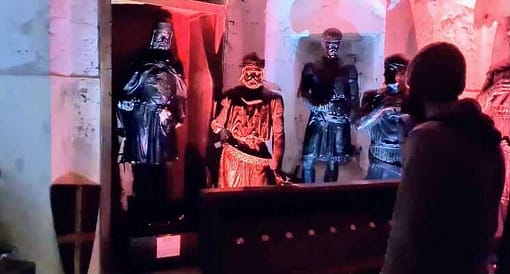
At the heart of art and creativity lies the need to communicate. ‘Only connect’ in EM Forster’s words. OSCHII gives artists new ways to talk to their audiences, and gives audiences new ways to talk back to art--by becoming participants. This new technology works with spatial interplay, giving artists a choice of tools to tangibly connect with audiences.
As artists and designers ourselves, we understand that technology is both inspirational and extremely frustrating.
On the one hand, learning something new opens pathways, provides inspiration for new projects and can send us down a rabbit hole of novel ideas and adventures. On the flip side, sometimes we just want to do something that *should* be fairly simple on paper but is actually a bloody nightmare when you start trying to work out the details. It becomes a barrier to innovation and creativity, and the whole project can quickly end up on the cutting room floor of creative inspiration.
So how can you use technology to make your art more interactive?
Maybe you’d like to tell someone a story or share some inspiration as they freely move through a space - a journey tailored to objects that they pass, the direction they are headed in, or what they leave behind? Or perhaps you’ve made a game based on retrieving an object that you’d like to find a way to capture digitally?
There are many things you might want to consider when deciding how to go about this, such as from whose perspective you might record the tracking data - the subject, or the object, or all data in an open space. This will decide what devices you have available to use - from cameras to ultrasonic or IR sensors, pressure or RFID tags.
What if you were to use real time sensor data to form part of an artwork that allowed for mass participation from people both locally and globally?
We’re not here to lecture you on how to go about creating your installation, nor do we have all the answers for you. But, we do have a tool that will make using technology to connect the artist and audience easier.
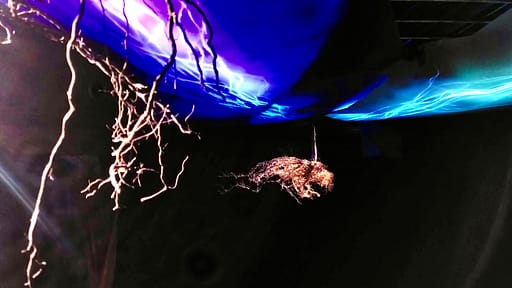
OSCHII helps you to process data from a number of different inputs by providing you with a ‘layer of abstraction’ so you don’t have to go away and learn everything. It can process signals from audio patterns, proximity sensors and conductive items to QR codes and hashtags on social media. It can even allow for participation from people around the world through integrations from all over the web.
It’s still up to you how you wish to process this data and create your interactive narrative.
We’re currently developing a workshop that will invite artists and other creatives into our studio to play with some of these sensing devices and processors. This will give them the space to develop ideas, narratives and experiences inspired by their own professions and disciplines. We stand by the principles of open source and many of the developments we make are shared with others with the common goal of culture. We are all artists.